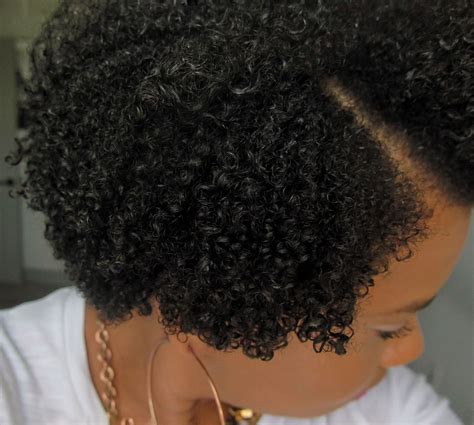Introduction
Embrace the beauty of your natural hair and elevate its allure with the perfect hair color. Whether you desire a subtle refresh or a bold transformation, choosing the best hair color for natural hair is crucial. This comprehensive guide will navigate you through various hair color options, highlighting the most flattering shades for your skin tone and hair type.

Understanding Your Hair Texture and Porosity
Hair Texture
Hair texture refers to the width and shape of your hair strands. Different hair textures absorb color differently, influencing the final result.
- Type 1 (Straight): Smooth, fine hair with low porosity
- Type 2 (Wavy): Defined waves with medium porosity
- Type 3 (Curly): Tight curls with high porosity
- Type 4 (Coily): Springy coils with very high porosity
Hair Porosity
Hair porosity measures how easily your hair absorbs and retains moisture.
- Low Porosity: Hair struggles to absorb moisture, resulting in longer processing times for color.
- Medium Porosity: Hair absorbs moisture at a moderate rate, offering balanced color results.
- High Porosity: Hair quickly absorbs moisture, but struggles to retain it, requiring frequent touch-ups.
Best Hair Colors for Natural Hair
1. Natural Brown Shades
For those who prefer a subtle enhancement, natural brown shades complement all skin tones and hair textures.
- Warm Brown: Rich, chocolatey hues enhance warm undertones.
- Cool Brown: Ashy, neutral shades complement cool undertones.
- Chestnut Brown: A reddish-brown that adds warmth and depth.
2. Golden Blonde Shades
Blonde shades are surprisingly flattering on natural hair, adding subtle highlights or bold transformations.
- Honey Blonde: A warm, golden hue that enhances warm skin tones.
- Caramel Blonde: A rich, buttery shade that adds depth and dimension.
- Strawberry Blonde: A unique shade with subtle red undertones, perfect for fair skin tones.
3. Copper and Auburn Shades
Copper and auburn shades infuse natural hair with a fiery glow.
- Copper: A warm, metallic hue that complements warmer skin tones.
- Auburn: A reddish-brown shade that ranges from deep mahogany to vibrant orange.
4. Red Shades
Red shades are a bold statement that can transform your natural hair into a stunning focal point.
- Dark Red: A deep, burgundy shade that adds a touch of sophistication.
- Bright Red: A vibrant, scarlet shade that commands attention.
- Crimson Red: A deep, rich hue that evokes elegance and drama.
5. Dimensional Colors
Dimensional colors combine multiple shades to create a unique, multi-dimensional effect.
- Ombre: Gradual transition from darker roots to lighter ends.
- Balayage: Hand-painted highlights that add subtle dimension.
- Highlights: Targeted areas of color that brighten and enhance the overall look.
Tips for Choosing the Best Hair Color
- Consider your skin tone: Warm skin tones complement warm hair colors, while cool skin tones suit cool hair colors.
- Match your hair texture: Fine hair requires more frequent touch-ups than coarse hair.
- Assess your hair porosity: High porosity hair needs more frequent treatments to maintain color.
- Consult a professional colorist: An experienced stylist can guide you in selecting the best hair color for your specific needs.
Benefits of Coloring Natural Hair
- Enhances natural beauty by adding dimension and vibrancy.
- Conceals gray hairs effectively.
- Expresses individuality and personal style.
- Boosts confidence and self-esteem.
- Can be used to correct color mistakes or faded hair.
Importance of Hair Care After Coloring
Post-coloring hair care is essential to maintain vibrant color and healthy tresses.
- Use color-safe shampoo and conditioner: Avoid shampoos with sulfates that can strip color.
- Deep condition regularly: Replenish moisture and strengthen hair.
- Protect from heat: Use heat protectant sprays before styling.
- Minimize chemical treatments: Limit perms or relaxers, as they can damage colored hair.
- Touch up roots: Refresh the color every 4-6 weeks to prevent noticeable fading.
Effective Strategies for Maintaining Color
- Avoid washing hair too frequently.
- Use cold water when washing and rinsing.
- Towel-blot hair instead of rubbing.
- Protect hair from the sun’s UV rays.
- Trim split ends regularly.
Conclusion
Choosing the best hair color for natural hair is a transformative experience that empowers you to embrace your unique beauty. By understanding your hair texture, porosity, and skin tone, you can select a shade that complements your natural features. With proper hair care and maintenance, you can enjoy vibrant, healthy colored hair that radiates confidence and style. So, embrace the endless possibilities and let your natural hair shine with the perfect touch of color.
Appendix
Table 1: Hair Color Options for Different Skin Tones
| Skin Tone | Warm Hair Colors | Cool Hair Colors |
|---|---|---|
| Warm | Honey Blonde, Copper, Auburn | Strawberry Blonde, Ice Blonde, Ash Brown |
| Cool | Cool Brown, Platinum Blonde, Silver | Mahogany Red, Burgundy, Deep Brown |
| Neutral | Any shade | Any shade |
Table 2: Hair Color Recommendations for Different Hair Textures
| Hair Texture | Color Options |
|---|---|
| Type 1 (Straight) | Subtle highlights, balayage, ombre |
| Type 2 (Wavy) | Dimensional colors, copper shades, blonde highlights |
| Type 3 (Curly) | Rich browns, warm reds, highlights, lowlights |
| Type 4 (Coily) | Bright reds, auburn shades, high-contrast colors |
Table 3: Effects of Hair Porosity on Color Absorption
| Hair Porosity | Color Absorption | Processing Time |
|---|---|---|
| Low | Difficult to absorb | Longer processing time |
| Medium | Moderate absorption | Average processing time |
| High | Rapid absorption | Shorter processing time |
Table 4: Tips for Choosing the Best Hair Colorist
- Check for experience and expertise in coloring natural hair.
- Request a consultation to discuss your desired results.
- Look for a stylist who uses high-quality hair products.
- Read online reviews and ask for recommendations.
- Trust your intuition and choose a stylist you feel comfortable with.
